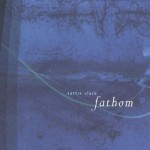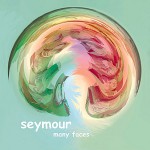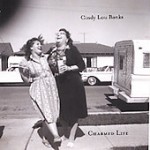Dandy Warhols
 Welcome To The Monkey House
Welcome To The Monkey House
Capitol Records
Their third album for Capitol (technically, the first one Dandys Rule OK, was already out on T/K Records before Capitol ever got their mitts on it) Records and fourth overall, finds the irascible Dandy Warhols stretching out and heading off into entirely new musical territory. While it seems certain that this album will probably alienate a few long-time fans who will feel the band has deserted its guitar-heavy Stones meet Velvet Underground roots in favor of ‘80s-styled keyboard filigrees, dance-beats and electronic tweaks; it is equally clear that the band are likely to pick up new fans as well.
While success has mostly eluded the Dandys in the US, the band has conquered Europe, garnering gold records for sales outside of the US, throughout the rest of the world. In addition, the band has attracted some very high-profile admirers, including Duran Duran’s Nick Rhodes, who co-produced this album; and David Bowie, who invited the Dandys to be his opening act for his “A Reality” tour this fall.
Without doubt, no band hailing from Portland has ever been as self-consciously cool as the Dandy Warhols. The title for this album pays tribute to a book of short stories of the same name by Kurt Vonnegut Jr. And the zippered banana on black album cover obviously alludes to the covers of The Velvet Underground and Nico </exec/obidos/ASIN/B000002G7C/104-9669092-6918300> (the “banana cover” created by Andy Warhol) and the Stones’ Sticky Fingers, as well as giving a nod toward the Beatles‘ latter day Apple recordings.
Musical comparisons with the Underground still remain somewhat valid, more so the suggestions of T-Rex, Love and Rockets and Ride. Scary Monsters– period David Bowie citations abound on this album, as do countless other references to bands and music of the ‘80s. The Dandys’ obvious love for the Rolling Stones has definitely been subdued for this affair. This is attributable, at least in part, to Rhodes’ presence in the recording process, as well as that of Tony Visconti (long-time producer of Bowie and T. Tex) on a couple of songs.
The band remains intact from their last venture, Thirteen Tales From Urban Bohemia, which came out three years ago. Courtney Taylor-Taylor remains at the helm, steering the band with his usual sense of wanly fey impertinence. Zia McCabe continues to add her sparse keyboard embellishments and occasional tambourine flourishes to the mix. Brent De Boer, Courtney’s cousin, remains to man the drummer’s chair. Since the last album, Peter Holmstom married his longtime girlfriend, uniquely, taking her surname in the process. His name is now Peter Loew and his role as a guitarist is greatly diminished on this project; though not cut out of the picture altogether. Perhaps “more succinct” would be the best term.
The album begins with the abbreviated title song, made to sound impromptu, wherein, with customary indolent enthusiasm, Courtney states the theme for this outing- “Wire’s coming back again/Elastica got sent by them/When Michael Jackson dies/ We’re covering Blackbird.” See the joke is, Michael Jackson owns the rights to the Beatles’ catalog… Get it? Oh never mind.
So the first “complete” song (in a Warholian sense anyway) on the album is also the first single, “We Used To Be Friends,” a song which attempts to fool the unwitting listener into thinking this is the same old Dandy’s. A familiar vocal melody decorates the verses, as a highly effected tremolo guitar jitters frantically beneath a phat key bassline. But Courtney breaks out on the chorus with a Beck-like falsetto over Loew’s Boston-ish power chords. Like Mr. Hansen singing “More Than A Feeling,” or something.
Guitars also make an appearance on “Plan A,” a circular piece with an annoying little toy organ figure and Simon LeBon on backing vocals. Someone’s (Courtney? LeBon?) beautiful falsetto lilts like a moon shadow over the bridge. A catchy synth bassline propels “Wonderful You,” another song with a sexy, synthetic chorus; with more falsetto vocal lines in the “B” section of the number and a helluva long, hypnotically repetitious fade.
“I Am A Scientist” liberally appropriates, thematically anyway , from Robert Pollard and Guided By Voices‘ song of the same name; sounding (with the help of guest guitarist Nile Rodgers‘ raging rhythm jags) like Depeche Mode/New Order, produced by Thomas Dolby- with angular Bowie-esque, “Fashion” interjections slicing through; and a hint of Gary Numan thrown in, just to touch all the ‘80s techno bases.
The suggestions of Gary Numan continue with “I Am Over It,” lockstep riffs clocking methodically, in cog-tight precision. There seems to be a certain quest for self-affirmation among the song titles here, three of which contain the declaration, “I Am…” (although, realistically, two of them, “I Am A Scientist” and “I Am Sound,” are more delusional than affirmative and “I Am Over It” is an avowal of an altogether different color). “Let’s see if we can do this in one toke… take.” Yeah, sure. You bet.
Basketball Jones is back on “The Dandy Warhols Love Almost Everyone,” falsetto vocals abounding; a brief, chuckle-beated confection, with crunchy guitars and creamy caramel keyboard phrasings. Yum yum. “Sincere Because I…” features lush vocal harmonies over a shimmering drone; instrumentation which glancingly limns and dances like dappled sunlight upon a wind whipped lake.
With Bowie’s “Ashes To Ashes” as its model, “You Were The Last High,” co-written with Evan Dando of the Lemonheads (who also sings on the track) floats in its own limitless space, but the synth solo in the middle is close enough for horseshoes. We‘ll be hearing a lot more of this song in the days to come. Rest assured. “Heavenly” rocks harder than most of the tracks, with big guitars wheeling like yellow Humvees down an endless black highway. Oh yeah.
As if the Dandys had not milked “Ashes To Ashes” enough already, they reprise with “I Am Sound,” the delicate piano part of which hearkens straight back to Major Tom and his “problems,” and is lifted, if not directly, then at least in spirit. Fortuitously, Courtney veers into a different mode. A fairly forgettable song.
The Visconti produced “Hit Rock Bottom” throbs with a T Rex rides Love and Rockets sort of vibe, coasting smoothly on the greased rails of a solid groove. Infectious like SARS, baby.
“You Come In Burned” spends a lot of time exploring both sides (frontwards and backwards) of a single guitar riff, before launching into a glum piece of moody atmospherics that would have been better at about half of its seven and a half minute length. Still, you can’t fault the Dandy Warhols for occasional self-indulgences; for to do so would be to entirely abnegate their personae altogether.
For there is more meat here than on previous Dandy Warhol albums. While Courtney Taylor still remains one of the more enigmatically elliptical songwriters in the business, and while the band still steadfastly refuses to take itself seriously, despite its fast-rising cache (particularly in Europe), this album bears up best under repeated listenings. There are interesting instrumental layers to this album, to which frequent auditions will attest.
But, if three quarters of rock is attitude, Courtney and company have it in spades. And while that attitude is something that critics and consumers either buy or hate, it is also true that (European) success has not spoiled the Dandy Warhols in the least, it has only buried their tongues even more deeply in their cheeks. If not the definitive Dandys album, this one surely opens up tremendous possibilities for those that will follow.
Sattie Clark
 Fathom
Fathom
17 Reasons Why Records
It’s hard to believe that it’s already been six years since Sattie Clark released her last album with her band 17 Reasons Why. That album, The Dark Years, won accolades from the press and in 1999 helped the band to win the Sony 1999 Battle Of The Bands contest, which got them a demo deal with Sony, that (as is usually the case with major labels) led nowhere, of course- proving to be a huge waste of time and energy- which is generally the label‘s objective when they actually have no real intention of getting behind an act. Let ‘em spin their wheels for a while. Take ’em out of circulation. Ah, the wonderful music industry!
There is nothing presented in her promotional materials to suggest that Sony professionally messed with Sattie during her brief association with the label: although it’s a safe bet. Because, that’s what major labels do, when they’re not bitching about loss of revenues to illegal downloads via the internet. But, and more importantly, in addition to whatever travails Sattie suffered at the hands of the multi-national mega-media cartel that is Sony these days, she also suffered three great personal tragedies over the past five years- which have forced her to confront and reassess her values and beliefs.
The result is this nine song, well ten, counting the “secret track,“ collection (unfortunately, four songs intended for the project were tragically lost in their entirety in the studio, due to a computer meltdown), a transcendent album of hard won victories and deep emotional lessons played out in loving detail on this sublimely pristine recording. A milieu reminiscent of early Joni Mitchell meeting Sarah McLachlan and Shawn Colvin, with the Indigo Girls singing harmony, surrounds Sattie’s cerebrations throughout this recording: her heart may be on her sleeve, but her brain is right where it should be, processing information at a rapid pace- the sum of which, admittedly abbreviatedly, is contained herein. Hers are the smart and wise observations of a mature individual who has experienced a great deal in her life.
The album is a slow journey from darkness (each of the first six songs deal directly with darkness as a subject or condition) toward light. Finally, the seventh song, “Blind,” allows “for every hour spent in darkness, comes a moment in the light.” The last two songs seem, at last, to surmount the inescapable darkness, giving some small hope for the future.
The first track, “Poison Darts” serves as a bit of an introduction to the nightmare that is about to unfurl. With her acoustic guitar matched by that of Lara Mitchell (who also provides additional harmony vocals, although most of the backup vocals sound double-tracked by Sattie) and Jason Roark’s umbral, volume-pedal ether, electric guitar, Sattie finds foundation in husband Eric Kaster’s insistent drum beat. Then, Jeff Leonard joins on the bass. The second time around, a string trio (including the late violinist, Marty Jennings) unites with the group. Roark’s ethereal backwards guitar solo hovers like a ghost above the scene.
A moaning cello blows like a leaf in the cold autumn moonlight of “The Dark Years” (the title of her album with 17 Reasons Why), a sober meditation on the impermanence of this life, with Tim Ellis guesting on acoustic guitar and Maria Callahan (Doris Daze) lending additional background harmonies on the choruses. Sattie’s fragile delivery on the ballad “Paint the Day,” conjures Shawn Colvin for its bittersweet piquancy; and naked vocal quality- with Jennings’ violin weeping in the foreground.
“Desdemona” refers neither to Othello’s wife nor to the moon of Uranus (no pun intended), but is instead based, somewhat, on elements in Jeff Noon’s groundbreaking 1993 novel, “Vurt.” Joe Crocus, a character in another of Noon’s novels effuses “open all channels- connect to everything,” and Sattie seems to be faithfully following that philosophy to its ultimate logical imperative.
Joseph Conrad is not the source for “Heart Of Darkness,” but the song is a journey just the same, toward self-awareness through the harrowing jungles of fear and depression. And, as hard as it is to listen to Sattie’s absolutely crestfallen lyrics, it is obvious that it was far more painful for her to write them. There is simply no hope for solace or redemption here. Intensely heavy.
And “Farmington Station” is even darker still; sounding much like the summation of a suicide- a collection of hopeless emotions, chiding regrets and anguished sorrows, ghosting vaporously into sad, fleeting images: which are all that’s really left to the living in such a terrible situation. Here, as is almost always the case, Marty Jennings’ mournful violin leads the string section through an highly elegiac chamber arrangement, which adds to the funereal ambience of the entire album (hovering over this is the tangential reality that Higgins was to die not long after the recording of this album).
The hymn-like “Blind” offers some small consolation and relief from the lyrical misery, though it’s a song heartbreakingly rendered, with Sattie’s voice, hardly above a whisper, murmuring tenderly, the pretty melody. At last, “Satisfied,” certainly the best candidate for a single from this set, offers a few major chords and a bit of hope, and the first real respite from all the gloom and woe. Impeccably sublime vocal harmonies wrap around Sattie’s lead vocal like a form-fitting glove, as pizzicato string arpeggios bound across the sonic landscape behind her.
The last song listed, “I Wish You Well” ends the album on a wistfully pensive note, brooding and clouded with introspect, though brightening in the salutation of the chorus. The song does not end, but merely passes by, like a thick, heavy fog over a slow moving river. After eleven minutes and two seconds of sleepy silence, the “secret” track emerges, Cocteau Twins-like, in an indistinct choir of muted hypnotic droning tones; as Sattie ponders the “dream inside the dream.”
While this is a magnificently recorded work, it is also ponderous in the enormity of the emotional investment one needs to make the transition, as Sattie Clark does, from darkness toward light. And, as cathartic as this album must have been for her to record, there is no doubt some bittersweet recurrence of all the pain she let go of here, in the passing of Marty Jennings. So, perhaps Sattie Clark’s passage through melancholy is not quite at an end.
There is a duel meaning to the title of this album. For, there is fathom, as to comprehend the meaning of something. And then there is the nautical fathom of six feet in depth in water. As Shakespeare said in The Tempest, “Full fathom five thy father lies/Of his bones are coral made/Those are pearls that were his eyes/Nothing of him that doth fade/But doth suffer a sea-change/Into something rich and strange.” Sattie Clark’s experience seems to include both comprehension and depth and for that we are the richer.
Cindy Lou banks
Charmed Life
Barn Sour Records
Cindy Lou Banks first came to local prominence with the country group No Way Home, a band that won several awards from the Portland Music Association during their four years together. They released one album, “Gone,” on Tim/Kerr Records which earned regional acclaim for the high level of songwriting and musicianship displayed.
For this, her first solo venture since leaving the group, Cindy Lou enlisted the services of longtime Oregon legend Gary Ogan to produce. In addition a laundry list of well-known local luminaries make appearances, including Ogan, Steve James Wright, Ron George, Ron Stephens, Mel Kubik, Skip Parente, and the late Dave Carter, among many others; adding their talents to the production of the ten songs found here.
And while you can take the girl out of the country, you can’t take the country out of the girl. So, while Banks and Ogan have made some effort to move away from country arrangements, the sentiments and the structures of the songs themselves still reflect a country adult contemporary sensibility.
Ogan’s gospel-inflected piano flourishes and other restrained drum, bass and guitar accompaniment are fitting touches to Cindy’s prayerful reading of “Gods And Monsters,” a song about the dichotomous nature of most human beings. Wright adds most of the color to “Beside Me,” contributing mandolin, dobro guitar and accordion, a song reminiscent of late-’70s period Linda Ronstadt. Cindy’s voice has a certain huskiness about it, reminiscent at times of Ronstadt, Karen Carpenter or Patsy Cline.
“Radio Silence” is a moody song about abandoned love, with Ogan’s organ filigrees adding a soulful touch to the production. A dusty road on a lazy day sort of song, “We’re So Polite” confronts interpersonal; issues with a wry sense of clarity- “It takes some nerve to claim that I could hurt you/A man who’s so remote that he should have his own time zone.” Possibly the first country oriented song to incorporate a double reed instrument into the arrangement, “One,” sports Mitch Hmori on Cor Anglais, whose oboe-like tones offer a distinct change in the aural scenery.
Carter’s banjo on the chorus of the strongest original song of the set “Fall Away,” seems to mirror Lindsay Buckingham’s style, on a song that could easily pass for the work of Fleetwood Mac, if it were a little faster in tempo. The pretty waltz “Lea” features Parente’s solemnly grum violin, tracking Cindy’s mournful vocal like a dark cloud, as she tells the piteous tale of a poor single mom who waits tables at a small local bar.
Cindy’s Celtic bluegrass interpretation of U2’s “Still Haven’t Found What I’m Looking For” is a nice twist, as Mick Doherty provides scintillating hammer dulcimer work over Wright’s energetic mandolin ruminations. “The Kindest Distance” features a multi-tracked chorus of Cindys, with Ogan’s simple piano backing and David Eby’s doleful cello endowing the song with solitary grace.
Cindy Lou Banks’ first solo project is a pleasant excursion, with lots of great musicianship within well-crafted songs. Banks’ explorations of the human condition offer plain, homespun wisdom and simple insights. And while her songs, with the exception of “Fall away,” generally lack the sort of melodic hooks to be truly memorable, they are meaningful efforts, all the same.
 Seymour
Seymour
Many Faces
Love Seed Records
Seymour are a bunch of old guys who were integral parts of the Portland music scene in the ‘60s and ‘70s, before placing their band on hiatus for twenty years, until the early ‘90s. They recorded an album in the mid-‘90s, this is their second venture since re-grouping. And while the average age of the five band members is easily mid-fiftyish, there is one thing that is plainly evident on this fourteen song album: these guys still write interesting songs and command the chops to play circles around the majority of bands in town.
John Dalrymple and Paul Stanton (who goes by Seymour Lovejoy in the band context), two of the band’s chief songwriters, founded the original Seymour in 1969; playing important gigs in the seminal Portland club scene. Both went on to play in a band called Smoke in early ‘80s. It was there that Dalrymple and Lovejoy met up with bassist Allan Gunter, who had spent the ‘60s with local legends such as Mr. Lucky and the Gamblers and Wrinkle (who cut an album for Warner Brothers in ‘69; which was produced by none other than our own Buck Munger).
Here, Lovejoy, Dalrymple and Gunter are joined by Jerry Noyes on bass (Gunter now mainly sings and plays the guitar, or the congas- and is the third of the band’s three resident songwriters). Noyes joined Seymour in 1970 when Dalrymple was drafted. He had earlier played with the Warlocks in the ‘60s, before being drafted himself. He returned when the band reconvened in 1991. Drummer Jim Badenoch first joined the band in 1991. So, in that regard, he is a relative newcomer.
Here, the band are joined by guests, vocalist Mick Austin (who wrote or co-wrote three of the songs played here) and drummer/percussionist John Ryan, both of whom were original members of the band- as well as three other musicians who play on a song or two and help to fill out the sonic landscape.
Seymour’s style is generally pure, driving rock ‘n’ roll; although, with four songwriters contributing to the project, there is a lot of variety. But the music is comparable to, yet distinctly different from, Little Feat, the Sons of Champlain, the Doobie Brothers, post-Jerry Dead, Warren Zevon, a few ‘60s and ‘70s British bands, and a folk/rock/funk/soul sound that was uniquely indigenous to the Northwest (well, north of San Francisco, anyway) in the ‘60s. It’s not as if these guys are complete dinosaurs, their sound is relatively modern, adult contemporary stuff; but they have absorbed a lot of music across five decades and it can be heard in these songs.
Dalrymple’s “Why Not” is a fast moving freight train of a song, with a funky, r&b sensibility that calls to mind World Party, besides some of the aforementioned. And his “All Natural radio” is kind of a Brewer & Shipley sort of number. Lovejoy’s “Dreams That Things Are Made Of” resonates of Supertramp, with synthesized keyboards setting the scene. Gunter’s “She’s Gone” calls to mind latter day Steve Stills, a straight -ahead folk rocker with a memorable chorus; with some tasty guitar licks thrown down along the way.
The band moves into a reggae setting for Austin’s “Boomerang,” which has a slight B-52s edge to it. David Chris’ knockout sax section on “Tightrope” takes the bluesy, funky r&b tune to a higher plane.
The funky feel continues with “Watermelon Day,” a good-time song, also a little reminiscent of Brewer and Shipley at the vocal end of things. Austin’s “Wooly Band,” features a banjo and displays touches of country inflections, ala Little Feat or New Riders of The Purple Sage. “$21 Dollar Phone Bill” borders on early Steely Dan blues/funk, with a large dose of that regional ambience alluded to earlier. “Happiness Blues” hits the genre head on, with horns a-blaring. “Wow” sounds sort of like Devo meets Wall Of Voodoo over at the Knack’s house. Oddly interesting.
Mick Austin’s adds a certain Tommy Heath (Tommy Tutone) quality to the vocal on “Bound For Glory,” a song which easily could have been a hit (like “Jenny, Jenny) in 1981. “Day Of The Girl” percolates like a Police meets the Cars groove before evolving into something closer to latterday Iron Butterfly or Electric Flag- an interesting combination of textures, there.
Seymour are a throwback, but not entirely anachronistic. In essence, they draw from a palette of styles that have crystallized over the past forty years. While the band may not have the youth to win over the MTV crowd, they have the talent to entertain just about anybody else.

